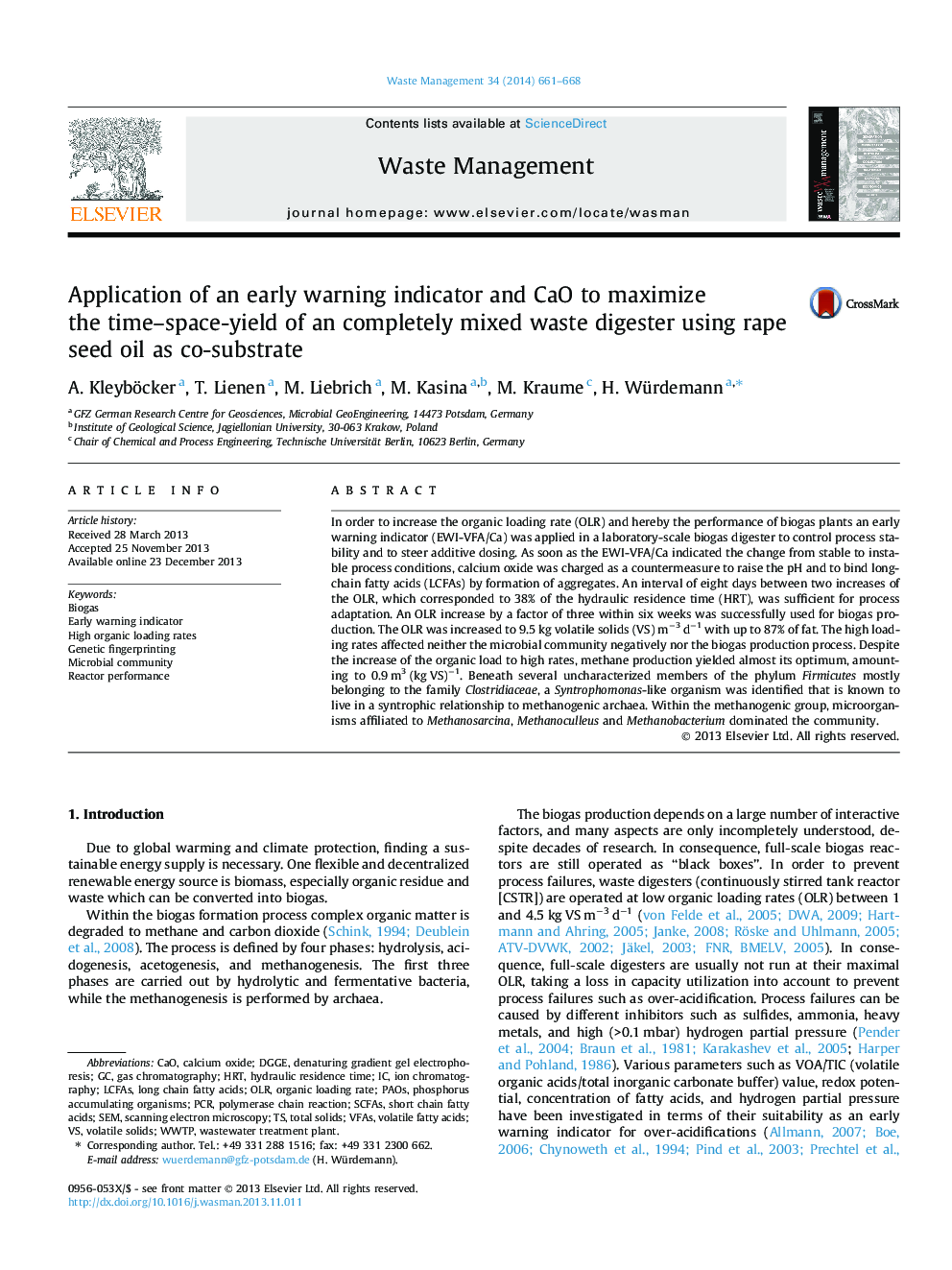| کد مقاله | کد نشریه | سال انتشار | مقاله انگلیسی | نسخه تمام متن |
|---|---|---|---|---|
| 6355389 | 1315042 | 2014 | 8 صفحه PDF | دانلود رایگان |

- Organic loading rate was increased by factor 3 within 6Â weeks.
- Stable process was accomplished to an organic loading rate up to 9.5 kg VS mâ3 dâ1.
- The risk of process failures was minimized by addition of calcium oxide.
- Aggregate formation stabilized the biogas production process.
- Methane yield >80% despite hydrogen partial pressure of >0.1Â mbar in gaseous phase.
In order to increase the organic loading rate (OLR) and hereby the performance of biogas plants an early warning indicator (EWI-VFA/Ca) was applied in a laboratory-scale biogas digester to control process stability and to steer additive dosing. As soon as the EWI-VFA/Ca indicated the change from stable to instable process conditions, calcium oxide was charged as a countermeasure to raise the pH and to bind long-chain fatty acids (LCFAs) by formation of aggregates. An interval of eight days between two increases of the OLR, which corresponded to 38% of the hydraulic residence time (HRT), was sufficient for process adaptation. An OLR increase by a factor of three within six weeks was successfully used for biogas production. The OLR was increased to 9.5 kg volatile solids (VS) mâ3 dâ1 with up to 87% of fat. The high loading rates affected neither the microbial community negatively nor the biogas production process. Despite the increase of the organic load to high rates, methane production yielded almost its optimum, amounting to 0.9 m3 (kg VS)â1. Beneath several uncharacterized members of the phylum Firmicutes mostly belonging to the family Clostridiaceae, a Syntrophomonas-like organism was identified that is known to live in a syntrophic relationship to methanogenic archaea. Within the methanogenic group, microorganisms affiliated to Methanosarcina, Methanoculleus and Methanobacterium dominated the community.
Journal: Waste Management - Volume 34, Issue 3, March 2014, Pages 661-668